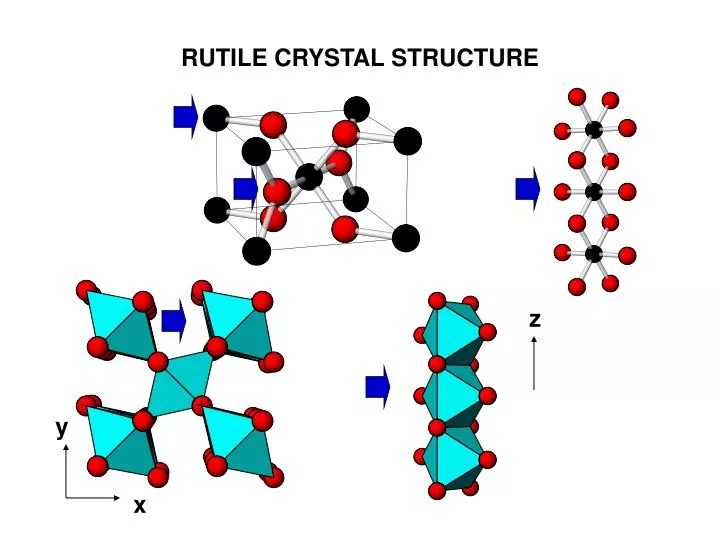

- CRYSTALMAKER TRANSFORM TO RUTILE STRUCTURE SKIN
- CRYSTALMAKER TRANSFORM TO RUTILE STRUCTURE SOFTWARE
- CRYSTALMAKER TRANSFORM TO RUTILE STRUCTURE FREE
Hence, they are used in sunscreens to protect against UV-induced skin damage. The UV absorption of nano-sized rutile particles is blue-shifted compared to bulk rutile, so that higher-energy UV light is absorbed by the nanoparticles. Nanoscale particles of rutile are transparent to visible light but are highly effective in the absorption of ultraviolet radiation ( sunscreen). Titanium dioxide pigment is the single greatest use of titanium worldwide. The main uses for rutile are the manufacture of refractory ceramic, as a pigment, and for the production of titanium metal.įinely powdered rutile is a brilliant white pigment and is used in paints, plastics, paper, foods, and other applications that call for a bright white color. Miners extract and separate the valuable minerals – e.g., rutile, zircon, and ilmenite. In large enough quantities in beach sands, rutile forms an important constituent of heavy minerals and ore deposits. The c-axis oriented growth of rutile appears clearly in nanorods, nanowires and abnormal grain growth phenomena of this phase.Īcicular crystals of rutile protruding from a quartz crystal
CRYSTALMAKER TRANSFORM TO RUTILE STRUCTURE FREE
Also included on the site are updates of bug fixes, conditions of use and prices, tips for displaying the structures, a gallery of images, a flash movie, and instructions for installing a ICSD server.Oxide mineral composed of titanium dioxide Rutileīrown, reddish brown, blood red, red, brownish yellow, pale yellow, yellow, pale blue, violet, rarely grass-green, grayish black black if high in Nb–TaĪcicular to Prismatic crystals, elongated and striated parallel to Ĭommon on facets of rutile exhibit the lowest surface free energy and are therefore thermodynamically most stable. The demo version can be queried and accessed by a web-interface which allows multiple methods of searching, and the resulting crystal structures can then be viewed online (with the CHIME plug-in) or downloaded for viewing with other visualization software. This database contains a 3325 structure subset of the 76,480 inorganic structures as of 2004. This site contains a free demonstration version of the Inorganic Crystal Structure Database.
CRYSTALMAKER TRANSFORM TO RUTILE STRUCTURE SOFTWARE
The following online resources contain files which can be downloaded for interactive viewing either from a stand-alone visualization software or viewed from the website as a Java applet.


 0 kommentar(er)
0 kommentar(er)
